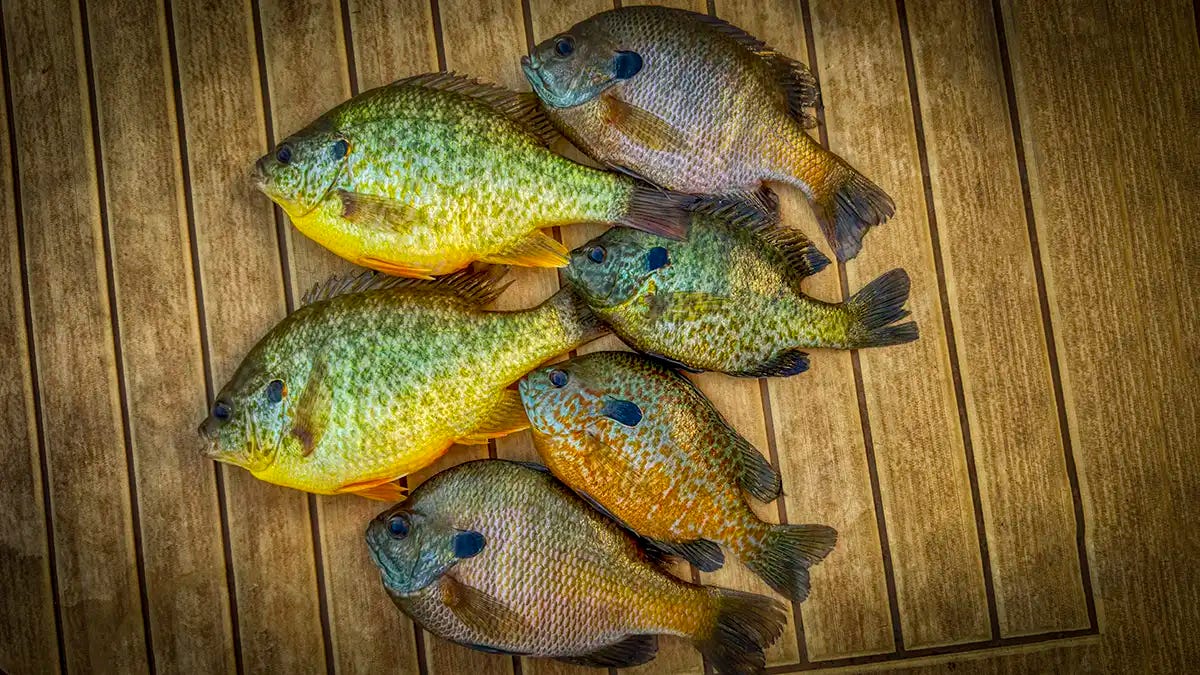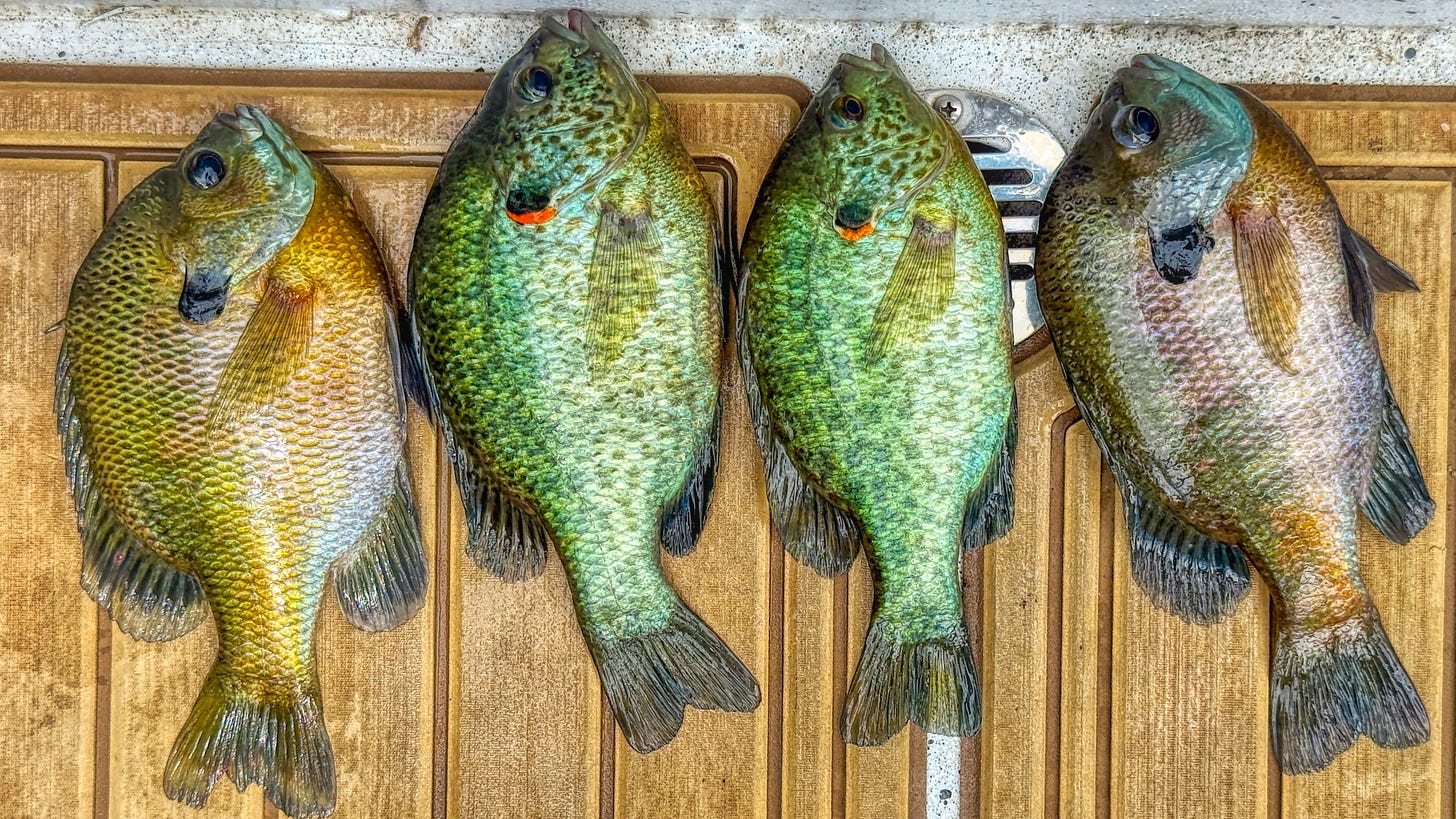THE YEAR-END PANFISH FISHING REPORT
An insight into observations and findings over the past 12 months of heavy bluegill, red ear and other panfish fishing
I’m going to do a series of findings on different types of fishing as I’ve been putting a concerted effort to document more stuff I learn and experience in effort to help other anglers who follow this newsletter. This one will focus on panfish as I made a concerted effort to fish for panfish every month of the year in several states in several types of water and try to find a lot of commonalities and seasonalities around catching panfish. I think these results will help a lot of anglers who are serious about bluegills, red ear sunfish and more. At the very least it should give you some things to consider in your own fishing.
I spent the last two years following panfish migrations on big reservoirs and small lakes alike. You need a certain size and structure to be able to follow panfish seasonal behaviors and migration related to spawning and foraging. Obviously panfish from one fishery to another differ slightly because the ecosystems likely provide differing forms of diet. In other words, one food source that dictates some behaviors in one reservoir might not exist in another.
I also was educated this year by our local fisheries biologist Adam Martin who put me on the path of many published papers from back a few decades ago on how panfish are one of the few fish who will make dietary choices based on predation. In other words, panfish can decide they will feed completely in open water and on things like zooplankton to avoid being in shallow water and on the bottom where they are more likely to be eaten by bass, catfish, pike and more.
You can also have fisheries that offer a ton of bug hatches, freshwater shrimp and other food sources that get off the bank. So keep all of this in mind as we go through some of this as I obviously am drawing conclusions based on my experiences on fisheries I have a pretty good knowledge of and from what I can validate from a lot of fish catches. When I say a lot, I mean thousands of bluegills and red ears.
I winter fished bluegills 17 times. I spring fished for panfish 41 times. I summer fished for them 28 times and I fall fished for panfish 21 times. So I put a lot of time into panfish fishing this year and that was to build off of what I learned in 2023.
THE NATURAL MIGRATIONS
I’ve talked about panfish migrations before, but this will be a quick refresher so we can cover a lot of the findings as they relate to seasonal behaviors. So to me, everything related to panfish migrations revolves around spawn and foraging. They forage before and after the spawn heavily, a little less in the winter but still pretty consistent. But those two things dictate most of their movement patterns from month to month.
Keep reading with a 7-day free trial
Subscribe to Current Fish to keep reading this post and get 7 days of free access to the full post archives.





